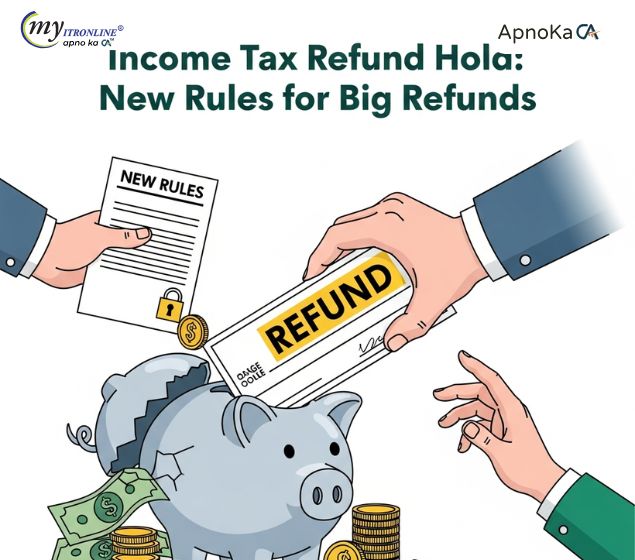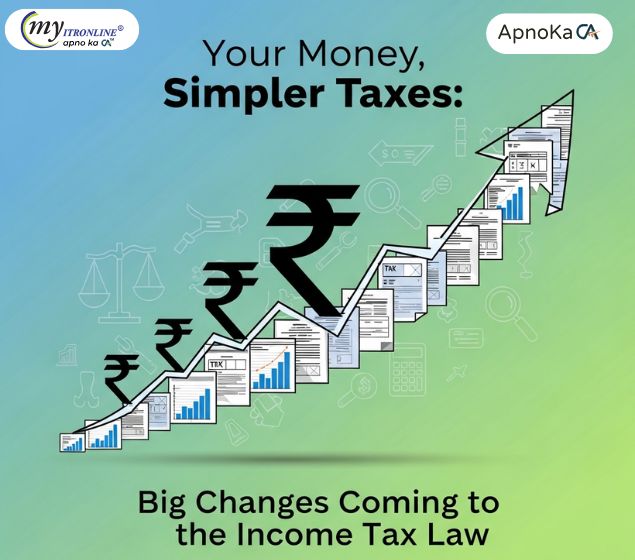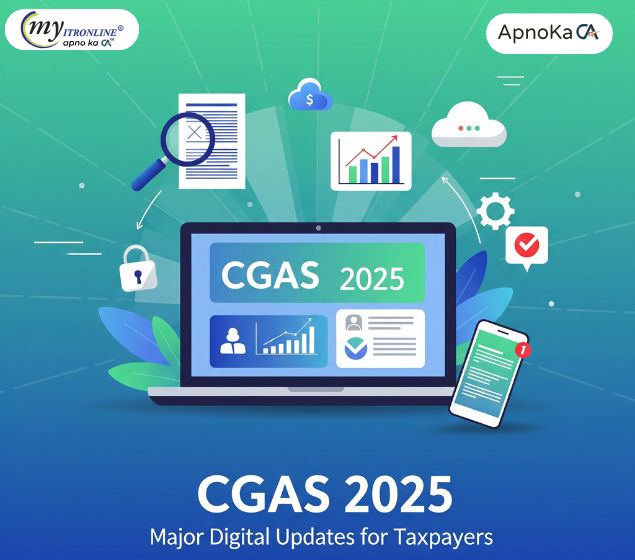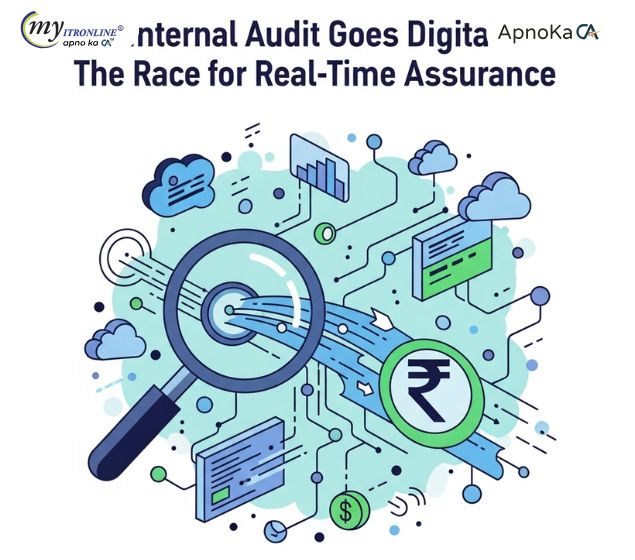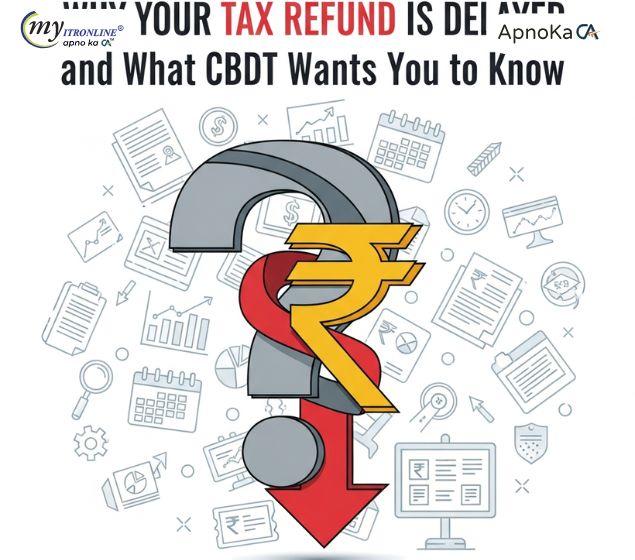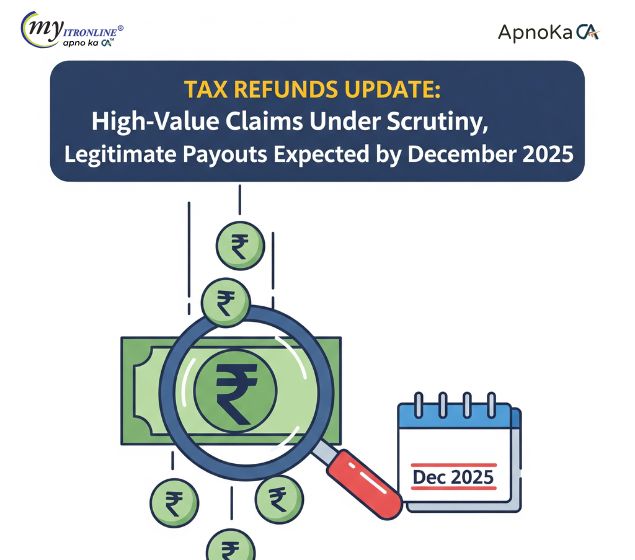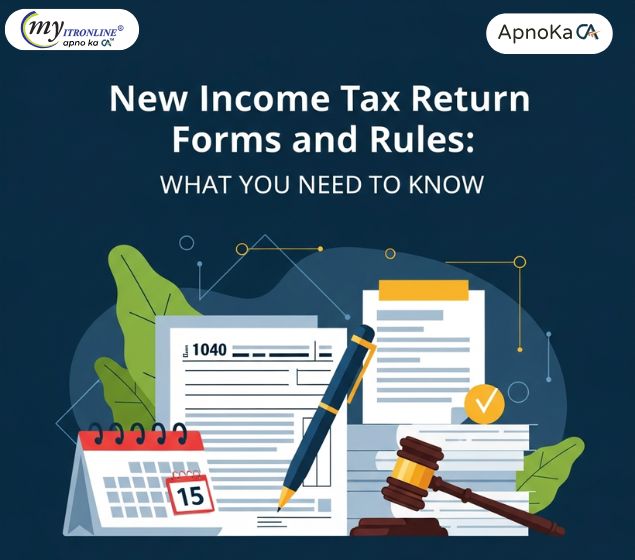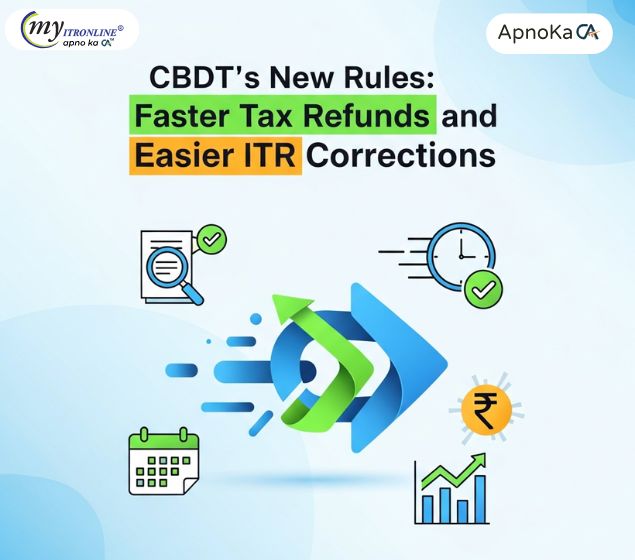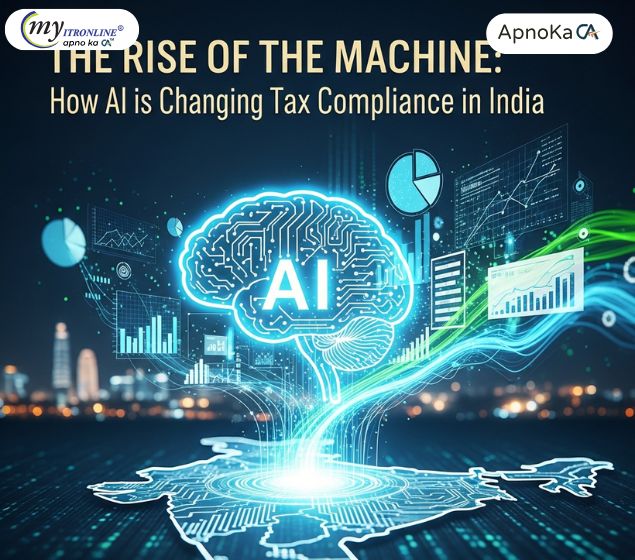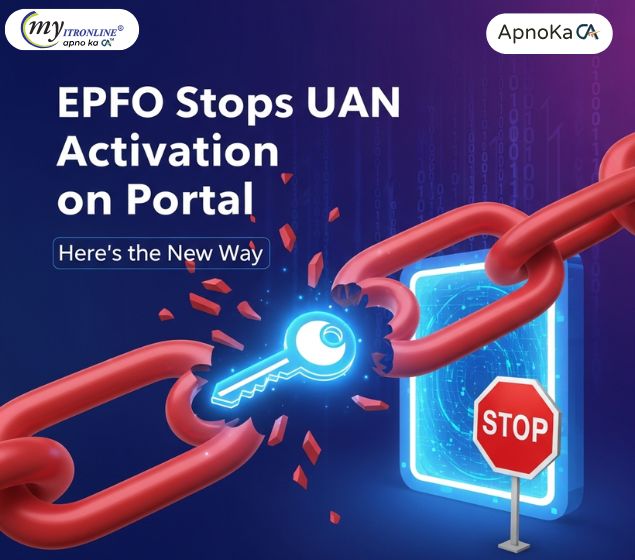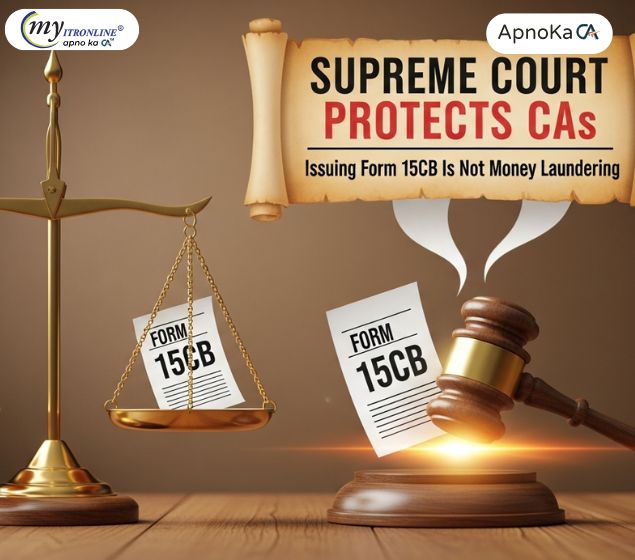What's Changed in ITR-1 & ITR-4 for AY 2025-26? A Detailed Breakdown
This blog provides a detailed breakdown of modifications in ITR-1 and ITR-4 forms for Assessment Year 2025-26 based on a recent analysis. It explains the new allowance for minor LTCG under Sec 112A (up to ₹1.25 lakh) in both forms, the enhanced conditional presumptive tax limits under Sec 44AD/44ADA linked to digital receipts, and common changes. These common changes include expanded disclosures for Form 10-IEA (new tax regime opt-out), mandatory specific clause selection for Chapter VI-A deductions, enhanced reporting for Sec 89A (foreign retirement income), compulsory disclosure of all active Indian bank accounts, and mandatory selection of a refund account. The post advises taxpayers on how to prepare based on these specific updates.
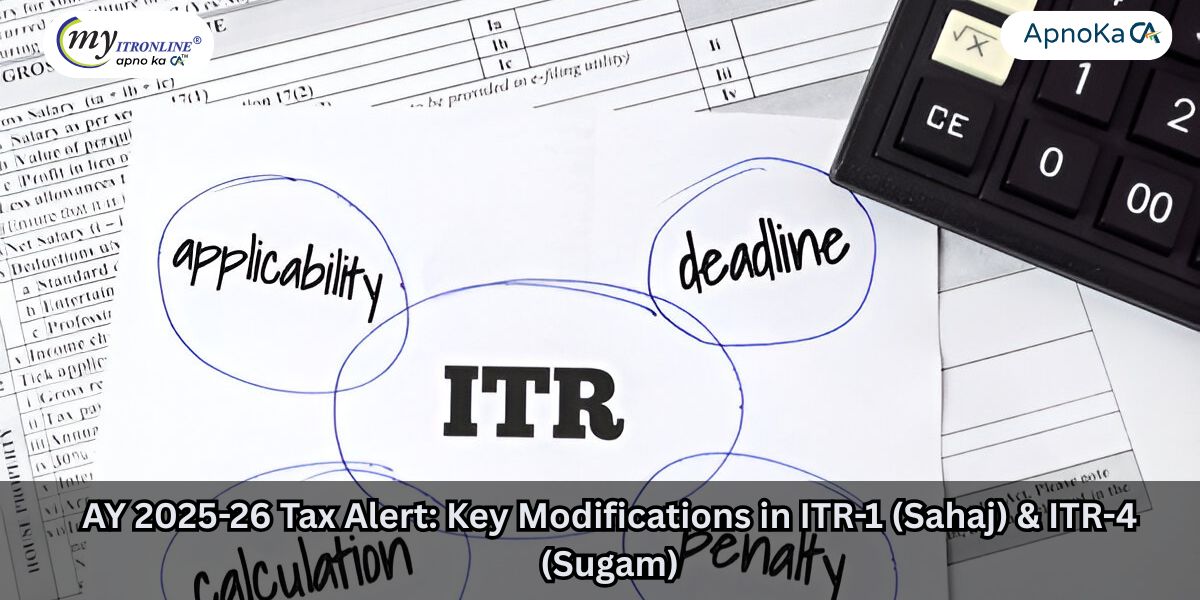
Once again, the annual income tax filing season has arrived for the Assessment Year (AY) 2025-26. While being familiar with the procedure can be beneficial, it is essential to keep abreast of any changes made to the Income Tax Return (ITR) forms to ensure accurate compliance. An overview that highlights the significant alterations in the widely utilized ITR-1 and ITR-4 forms for AY 2025-26, in contrast to the prior year, has come to light.
This blog piece will explore each modification outlined in that overview, providing a more detailed understanding of what these updates signify for you as a taxpayer.
(Clarification Regarding Form Names: It is important to note that the analysis image refers to ITR-1 as 'Sugam' and ITR-4 as 'Sahaj'. The conventional naming is ITR-1 (Sahaj) for salaried individuals or pensioners with straightforward income profiles, and ITR-4 (Sugam) for those who choose the presumptive taxation scheme. Although we adhere to the structure of the analysis image, referencing ITR-1 and ITR-4 as per its sections, please keep in mind the standard names.)
According to the analysis, one notable easing for ITR-1 filers is as follows:
- Introducing Minor Long-Term Capital Gains (LTCG) under Section 112A:
- What It Is: Section 112A pertains to the taxation of long-term capital gains arising from the sale of listed equity shares or equity-oriented mutual fund units, given that the Securities Transaction Tax (STT) has been paid. Historically, any income classified under the 'Capital Gains' category would disqualify a taxpayer from using the ultra-simple ITR-1.
- The Change: For AY 2025-26, the analysis suggests that you may now utilize ITR-1 even when there are such LTCG, contingent upon the fulfillment of two strict criteria:
- The total LTCG amount under Section 112A for the financial year must not exceed ₹1.25 lakh.
- You cannot have any capital losses that can be offset against this gain, nor any capital losses to be carried forward from previous years.
- Why It Matters: This adjustment is a positive development for small, passive investors. Individuals whose primary earnings come from salary or pensions but who may have realized minor profits from their equity investments (up to ₹1.25 lakh) can now potentially continue using the simpler ITR-1, thereby avoiding the necessity to deal with more intricate forms merely for this minor gain. It streamlines compliance for a specific group of taxpayers.
ITR-4 is designed for individuals, Hindu Undivided Families (HUFs), and firms (excluding Limited Liability Partnerships) that choose presumptive taxation under Sections 44AD, 44ADA, or 44AE. This examination highlights the following significant modifications:
- Inclusion of Minor LTCG under Section 112A:
- The Modification: Following the relaxation implemented for ITR-1, ITR-4 filers can now declare LTCG under Section 112A directly within the form, adhering to the identical conditions: the gain must be capped at ₹1.25 lakh, and there should be no capital losses available for set-off or carry forward.
- Importance: Taxpayers opting for presumptive taxation frequently have additional investments. This adjustment enables those with modest equity gains to continue utilizing ITR-4, thus simplifying their filing process.
- Increased Thresholds for Presumptive Taxation (Conditional):
- Definition: Presumptive taxation permits eligible taxpayers to report income based on a determined rate of their turnover or gross receipts, which simplifies both bookkeeping and tax computations.
- The Change & Requirements: The findings indicate a notable rise in the limits for turnover/receipt for the assessment year 2025-26, BUT this is only applicable if a considerable segment of business transactions occurs digitally:
- Section 44AD (Businesses): The threshold for opting for presumptive taxation has been elevated from ₹2 crore to ₹3 crore. However, this increased limit is accessible only if the cash receipts during the fiscal year constitute 5% or less of total turnover (indicating that 95% or more of the receipts must be processed through banking channels or digital methods).
- Section 44ADA (Professionals): The limit for gross receipts pertaining to eligible professionals (including doctors, lawyers, engineers, architects, accountants, etc.) is raised from ₹50 lakh to ₹75 lakh. Again, this enhanced limit applies only if cash receipts are 5% or less of total gross receipts.
- Importance: This represents a significant movement towards formalizing the economy and promoting digital payments. Businesses and professionals who adopt digital transactions can benefit from simplified taxation even with considerably higher levels of turnover or receipts. It necessitates careful monitoring of cash versus digital receipts in order to avail of the benefits.
The examination outlines various procedural and disclosure changes that influence anyone submitting either ITR-1 or ITR-4:
- Navigating the New Tax Regime Opt-Out (Form 10-IEA):
- Background: The New Tax Regime is the standard option. Taxpayers earning business income who wish to opt-out (and choose the Old Regime) must complete Form 10-IEA.
- The Update: The disclosures related to this option are now more detailed:
- If you opted out prior to AY 2025-26 (for instance, in AY 2024-25), you are required to disclose this and indicate whether you are continuing with the Old Regime or switching back.
- If AY 2025-26 marks your first time opting out, you must provide the acknowledgment details (such as the date and acknowledgment number) of the Form 10-IEA submitted.
- There is also a need for "additional clarification" if Form 10-IEA was submitted late.
- Importance: This enhances transparency and precise tracking of taxpayer decisions regarding tax regimes, particularly for those alternating between them or filing the form after the deadline.
- Accuracy in Claiming Deductions (Chapter VI-A: 80C to 80U):
- Background: Chapter VI-A deductions (which include investments in PPF/LIC under 80C, health insurance under 80D, donations under 80G, etc.) lower taxable income.
- The Update: Claiming these deductions now demands more specificity. The analysis suggests:
- You are required to choose the relevant deduction section from a pre-defined drop-down menu in the filing utility (no longer allowing free text entry).
- You will need to specify the exact clause or sub-section under which you are claiming the deduction. For instance, under Section 80C, you might need to indicate whether the claim pertains to life insurance premium, provident fund contribution, tuition fees, etc., based on the design of the utility.
- Importance: This aims to enhance the accuracy and legitimacy of deduction claims, avoiding ambiguous or incorrect entries. It necessitates that taxpayers maintain precise records linked to specific deduction clauses.
- Improved Reporting for Foreign Retirement Income (Section 89A):
- Background: Section 89A offers relief mechanisms for residents subject to Indian tax on income accrued in retirement accounts from specified foreign countries, potentially mitigating double taxation issues.
- The Update: The ITR forms now include "enhanced fields" for reporting this particular type of income and provide better "relief tracking."
- Importance: This likely leads to a more organized reporting process for such income, facilitating easier management and calculation of the applicable tax relief for both taxpayers and the department.
- Full Bank Account Disclosure:
- The Update: This represents a notable transparency initiative. The analysis indicates that you are now required to report details of ALL bank accounts maintained in India at any time during the financial year (from April 1, 2024, to March 31, 2025). This encompasses savings, current, OD accounts, etc.
- The Exception: The only accounts exempted are those deemed 'dormant' according to banking regulations.
- Importance: This requirement significantly enhances financial transparency. Taxpayers must be meticulous in documenting all their active accounts.
- Selecting Your Refund Account:
- The Update: From the complete list of bank accounts you provide, you must specifically choose one account for receiving any possible income tax refund.
- Importance: This is a procedural enhancement aimed at ensuring tax refunds are quickly credited to the taxpayer's selected preferred account, minimizing errors and delays.
Collectively, these modifications emphasized in the examination suggest several key themes:
- Focused Simplification: Allowing minor LTCG in ITR-1/ITR-4 simplifies the filing process for small investors.
- Digital Economy Momentum: Connecting higher presumptive limits to levels of digital transactions creates a strong motivation.
- Improved Transparency & Precision: The requirement to report all bank accounts and certain deduction provisions is designed to enhance data precision and compliance.
- Simplified Procedures: Assigning a refund account and structured reporting for Form 10-IEA/Section 89A aims to clarify processes.
- Evaluate LTCG (Sec 112A): If you have profits from listed equity/equity mutual funds, confirm whether the amount is under ₹1.25 lakh and if you have any capital losses. This will guide your eligibility for the ITR form (ITR-1/ITR-4 versus ITR-2/ITR-3).
- Examine Presumptive Eligibility (ITR-4 Users): If your turnover/receipts fall between the previous and new thresholds (₹2-3 Cr for businesses, ₹50-75L for professions), calculate your digital receipts percentage thoroughly. If it’s under 95%, you won’t be able to use the higher limits.
- Monitor Form 10-IEA Status: If you intend to opt-out of the New Tax Regime (or have previously done so), ensure you have your Form 10-IEA acknowledgment details at hand.
- Systematize Deduction Proofs: Go further than just the total amount. Record the specific sub-section or clause associated with each Chapter VI-A deduction claim (e.g., 80C - PF, 80C - LIC, 80D - Self/Family, 80G - Donation type).
- Consolidate All Bank Account Information: Prepare a list of details (Bank Name, Account Number, IFSC code) for ALL your active savings and current accounts in India. Determine which account you prefer for refunds.
- Details on Section 89A: If relevant, gather specific information regarding your foreign retirement account income.
Comprehending these intricate details outlined in the analysis is the initial step toward a seamless tax filing process for AY 2025-26. While this summary offers a detailed perspective based on the circulated analysis, always consult the official ITR utilities, guidelines, and notifications from the Income Tax Department on their portal (incometax.gov.in) once they become available. Stay updated, stay organized, and file with accuracy!
FILING YOUR INCOME TAX RETURN F.Y 2024-25 (A.Y. 2025-2026) WITH MYITRONLINE
The income tax filing deadline is right around the corner. If you haven’t filed yet, do it today with Myitronline! Avoid last minute rush and file your tax return today on MYITRONLINE in Just 5 mins.(www.myitronline.com)
If you are looking for eCA assistance to file your income tax return/ GST, you can opt for MYITRONLINE eCA assisted plan starting
Upload Salary Individual Form-16
If you have any questions with filing your tax return, please reply to this mail. info@myitronline.com OR call 9971055886,8130309886.
Note-All the aforementioned information in the article is taken from authentic resources and has been published after moderation. Any change in the information other than fact must be believed as a human error. For queries mail us at marketing@myitronline.com
Krishna Gopal Varshney
An editor at apnokacaKrishna Gopal Varshney, Founder & CEO of Myitronline Global Services Private Limited at Delhi. A dedicated and tireless Expert Service Provider for the clients seeking tax filing assistance and all other essential requirements associated with Business/Professional establishment. Connect to us and let us give the Best Support to make you a Success. Visit our website for latest Business News and IT Updates.
Leave a reply
Your email address will not be published. Required fields are marked *Share this article
Krishna Gopal Varshney, Founder & CEO of Myitronline Global Services Private Limited at Delhi. A dedicated and tireless Expert Service Provider for the clients seeking tax filing assistance and all other essential requirements associated with Business/Professional establishment. Connect to us and let us give the Best Support to make you a Success. Visit our website for latest Business News and IT Updates.
View articles








